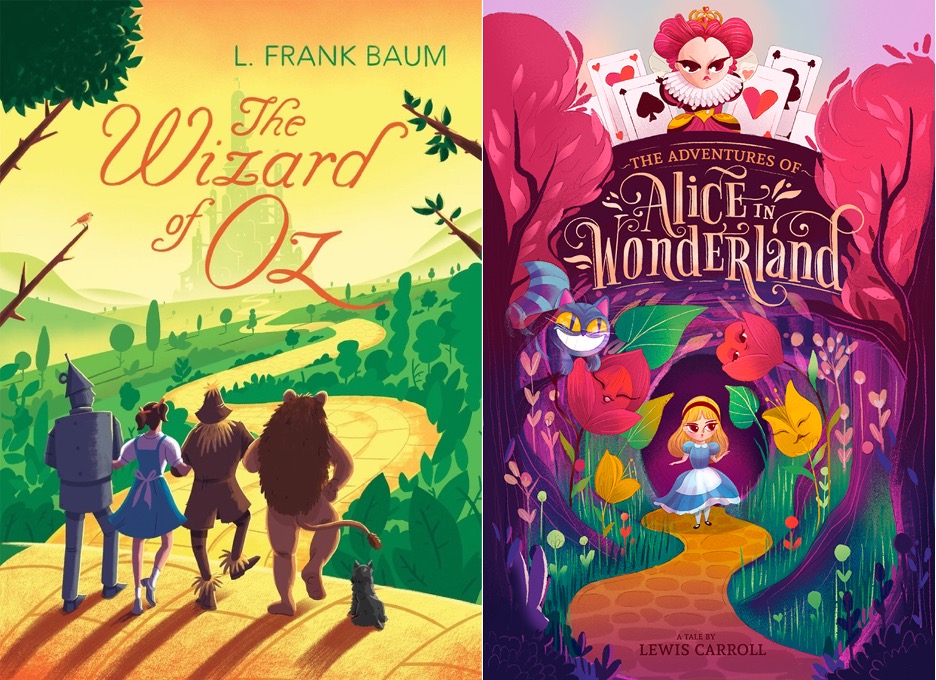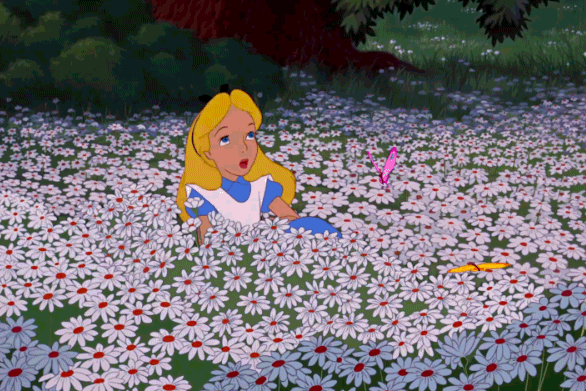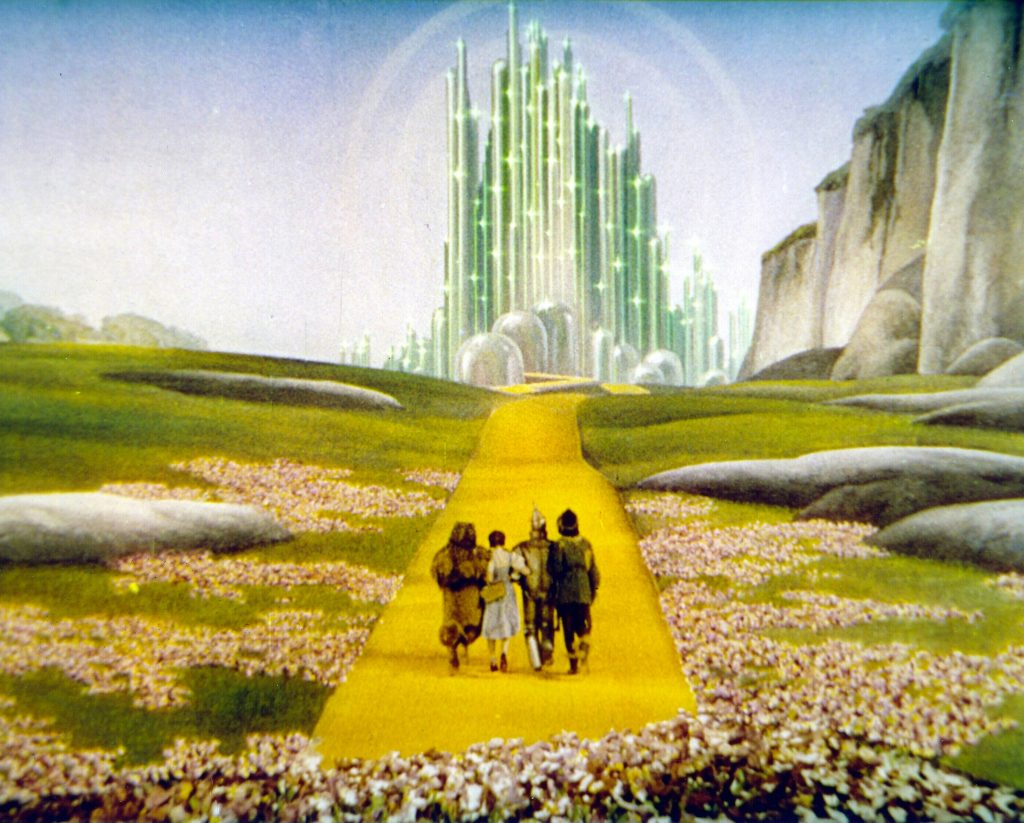Alice in Wonderland and The Wizard of Oz have long occupied similar space in pop culture. Dorothy and Alice walk hand in hand among our favorite childhood heroes. Their stories are so reminiscent of one another that their names are often uttered in the same breath, alluding to exploration of other whimsical realms, of imaginative adventure, and of budding identity. But each story still holds its own individual charm, while touching on many of the same themes.
Here, we will explore exactly what makes these stories so unique, and still so infinitely universal to audiences everywhere. (Disclaimer: For the purposes of this article, I’ll be referencing the most popular film versions of each story, though they both began as classic storybooks. I’ll be referring to Judy Garland’s 1939 portrayal of Dorothy, and the 1951 animated Alice.)
Though this is not true for the films, Alice in Wonderland actually came first. Lewis Carroll first wrote of Alice in the mid 1860’s, while L. Frank Baum’s The Wonderful Wizard of Oz was published over 30 years later. One could assume that Carroll’s wildly successful tale influenced and informed Baum’s writings.

Each tale begins in a different, and somewhat opposite way. Dorothy is thrust into her adventure against her will, by way of a freak accident, while Alice enters her tale willingly, as an active participant. Dorothy is swept away to Oz by a tornado (and a bump on the head), while Alice runs off to chase the white rabbit, either in her sleep or awake (it really wasn’t very clear).
Interestingly, they exit their stories in opposite ways. Whereas Dorothy was stolen away to Oz, she finds her own way back. Alice, on the other hand, volunteers to go on her journey and then makes it home by continual boldness.
Either way, both girls eventually find their way home. This is another theme that runs through the currant of each story: a young girl’s desire to return to familiar comfort. Dorothy’s last words in Oz were famously, “there’s no place like home”, while Alice’s sentiment was basically the same.
Though I am possibly projecting my own millennial biases onto these works of fiction, it seems to me that both (male) authors were trying to tell little girls that their place was at home, close to all things domestic, and that going on those pesky adventures will only end in tears. It is little wonder to me that both stories were popularized in 1950’s America.
On this feminist note, it is interesting to me that both protagonists were female. How would each story be affected if little Alice were Alex instead, or if Dorothy were Daniel? I don’t think that either plot would be greatly changed if either character were switched to her male counterpart. I think the difference here lies in the “how” of the story, rather than the “what”.
Alice and Dorothy were allowed such vulnerability and tenderness only because of their gender, since these emotional traits are associated with girls. The stereotypical male adventurer is brash, strong and unafraid (at least outwardly). The characters would have been expected to act out their stories differently if they were boys. Here, we see a prime example of typified gender roles in literature, and the unnecessary limits placed on characters as a result of their gender.

Age is another factor that sets these characters apart, and in some ways, defines them. Alice is around age 7, and Dorothy is about 12. This could account for the difference in tone and plot complexity in each story. Alice’s plot is often seen as disjointed and haphazard, while Dorothy’s story is more traditional.
As a 7-year-old, one could expect that Alice’s story wouldn’t make much logical sense, but would consist of a fanciful world filled with fun, zany characters. We could also expect this from Dorothy, but with a bit more maturity, and the logic and emotional depth of an older child.
As a fun experiment, I made my own family rewatch the films, and asked which story they liked better. Coincidentally, it was the younger ones (myself included) who prefer Alice in Wonderland, and the older generation who most enjoyed The Wizard of Oz, for the reasons I mentioned previously. Only those who remain children at heart can truly appreciate the magic of Alice in Wonderland. For those who need a more traditional story, The Wizard of Oz is a great choice.
Another reason for the difference in tone could be each story’s country of origin. The Wizard of Oz is a distinctly American tale, whereas Alice hails from Victorian England. Dorothy is a classic midwestern farm girl, who soon realizes that she’s not in Kansas anymore. Alice, on the other hand, has to fight the omnipotent monarchy to return home, a very English concept.
Despite their differences, both films share one artistic attribute in common. They both feature a vibrant color scheme that has tantalized audiences, both old and young, for decades.
A recent obsession with Breaking Bad has turned my mind to color theory, and its use in visual storytelling. Both Alice in Wonderland and The Wizard of Oz make excellent use of colors, which tell even more of each story symbolically, between the lines. Alice begins with a theme of white. She lays in a field of white flowers, and is disturbed by a jittery white rabbit, perpetually late. Historically, white is understood to signify innocence, and this seems to be true for Alice. The white rabbit’s preoccupation with time could suggest that the clock is always ticking on Alice’s childhood, and it’s time for her to grow up, whether or not she’s ready.

In Wonderland, she encounters a wide array of new colors throughout her journey, the most formidable of which is red, which she meets last. The Queen of Hearts, Alice’s adversary and the story’s villain, takes on red as her theme color, symbolizing the opposite of girlhood and innocence, or the loss of it.
In fact, Alice first draws the ire of the Queen by failing to paint one of her white roses red (not pink, not green, not aquamarine). This, to me, is a symbol of vulnerability peeking out through a veneer of false maturity, or a child not quite ready to grow up.
The Wizard of Oz also uses its own rich color theory, but toward a different end. Many scholars have compared Dorothy’s story to a cautionary tale on capitalism. Think about it. A very lavish, very green city was the story’s destination. Add in a yellow (or gold-ish) brick road. And fun fact: in Baum’s original book, Dorothy’s slippers were silver, not ruby red. So, a path of silver and gold leads to wealth and prosperity?
The symbolism here is almost too on-the-nose. But it is not one-dimensional. We also see the ugly side of capitalism, as another important character is represented by green. The Wicked Witch of the West, the story's villain, symbolizes the greed and selfishness associated with wealth, as her only concern is stealing Dorothy’s (silver/ruby) slippers. And, well, she is the color of money.

Even the film’s theme song, Judy Garland’s famous “Over the Rainbow”, is color based. Alice, too, sings a color themed song of her own.
“In the Golden Afternoon”, the song she sings with a choir of brightly-colored flowers, again references youth and its fleeting nature. Gold represents change. The golden hour, sunrise or sunset, bids farewell to one day and welcomes in another. (Think Ponyboy, here). It is a time of change, growth and evolution, of maturing and growing up. Which, like the song, can sometimes be melancholy.
Alice in Wonderland and The Wizard of Oz are two stories that can never be imitated or replaced. Alice and Dorothy have stood the test of time as two of the most endearing and loveable fictional characters of all time. And when we watch either of these films again for the 100th time, we can’t help but remember what it’s like to be a child on an adventure.

Marissa Armstrong is a Los Angeles native and currently a student at Arizona State University, where she majors in Film and English. Her brand of dark comedy stems from an appreciation of both the light and the dark in humanity. It is her purpose to use her storytelling wiles to celebrate all things tragically hilarious. Or hilariously tragic.